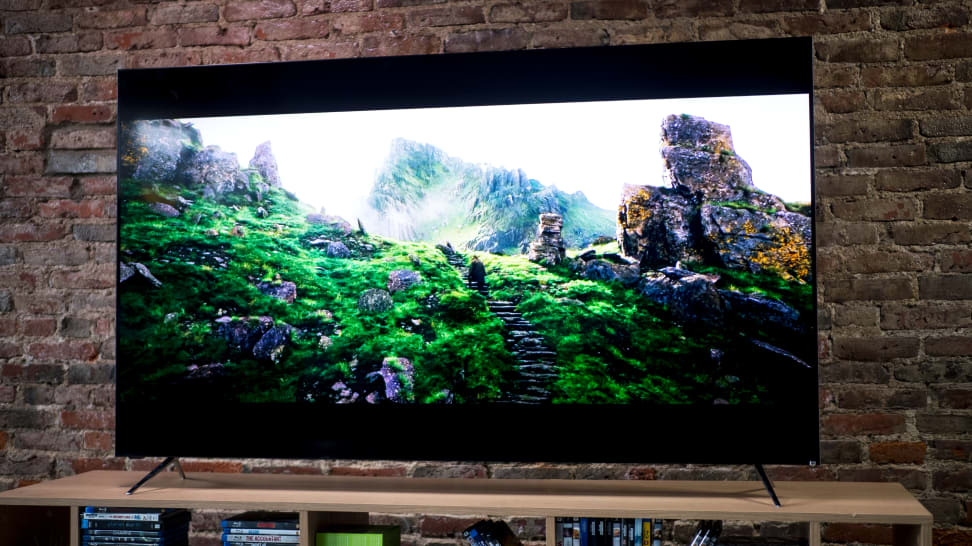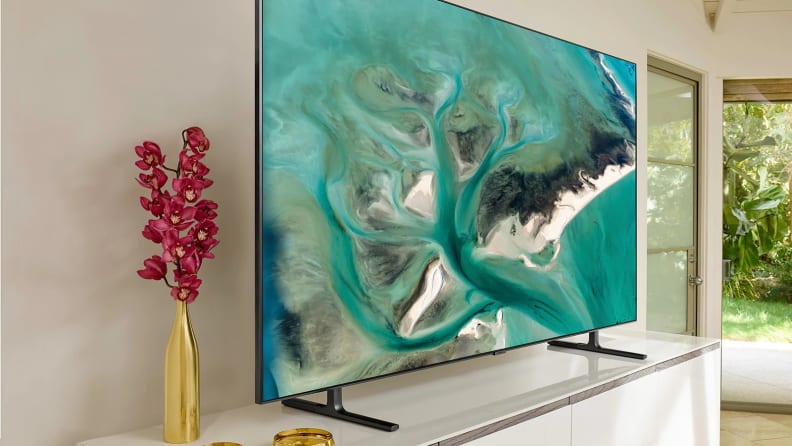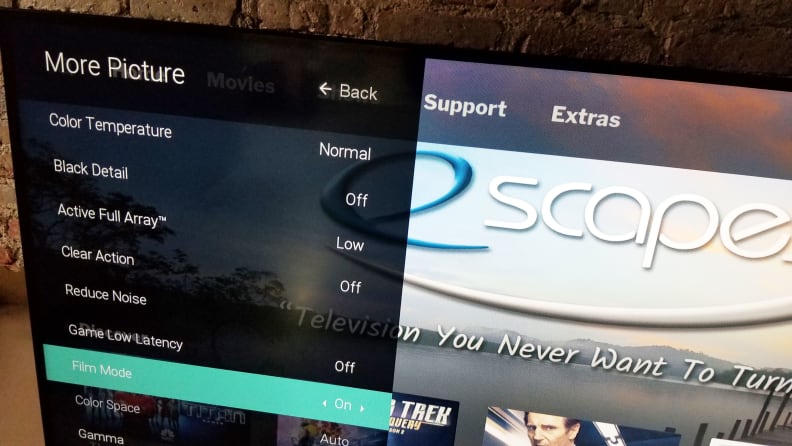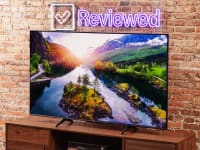How to pick the right 4K TV for your home
Most TVs are 4K these days, but how much do you need to spend?
 Credit:
Reviewed
Credit:
Reviewed
Products are chosen independently by our editors. Purchases made through our links may earn us a commission.
If you're still under the impression that "4K UHD TV" is a new thing, you need to check your calendar! Far from being new-fangled, 4K TVs are everywhere nowadays, and if you're looking to buy a new TV but hoping you won't have to pay more for 4K resolution, I have some bad news: they're all 4K now.
The good news is that with the proliferation of 4K TVs, they're cheaper and more affordable than ever, too. The overall quality of consumer TVs has increased dramatically in the last several years. You can get a solid 4K smart TV for under $500. And while the quality of the "floor" has gone up, so has the ceiling—the best TVs around are absolutely breathtaking. So you can find 4K TVs at a variety of screen sizes to fit most budgets.
However, with so many 4K TVs to choose from, it can be a little hard to understand just what, exactly, you're paying for. Why does one 50-inch 4K smart TV cost $600, and another costs $1,600? What is the difference between OLED and QLED (Quantum Dot), and can you even see it? What about HDR? All of these tech specs and picture enhancements are usually the reason one TV costs more than another, so it's important to understand what they mean and whether they're worth it for you.
What specs or upgrades should I look for?

Knowing what special specs a 4K TV have can help you decide if it's worth buying.
Let's assume you have a selection of the best 55-inch 4K TVs. Generally, the most expensive models are going to have the widest selection of special features and fancy technology.
Here is the real spec list you might see this year from an upper-tier 4K TV:
• $2,000 price tag
• 55-inch screen
• Quantum dots: A technology applied to some LCD screens that allows them to produce more vivid and rich colors
• Direct Full Array (or variant): This TV has a "full-array" backlight, which allows for control over discrete areas of the screen for darker blacks and higher contrast. Full-array backlighting is better but typically more expensive than edge backlighting on other TVs.
• Refresh Rate: 120 Hz. It's the preferable of the two TV refresh rates, 60 Hz and 120 Hz, and results in better motion resolution. Live sports and gaming benefit the most from 120 Hz refresh.
• HDR/Dolby Vision. If both the TV screen and the content you're watching are formatted for HDR/Dolby Vision, they provide brighter brights and more shadow detail.
While there's a lot more to high-end TVs than just these core specs, to a seasoned TV reviewer a glance at them reveals a handful of truths: it's a 120 Hz, smart, HDR TV with quantum dots and full-array local dimming. It has better backlight control than the "average" TV, as well as more color, a faster refresh rate, and is capable of the new High Dynamic Range playback mode. Cool stuff.
Now, let's say you didn't want to spend $2,000, but you still wanted to buy a 55-inch TV. Fortunately, there's another 55-inch 4K TV this year (from the same brand) for just $429. It doesn't have quite as compelling a design, nor does it have some of the higher-end features, but in the barest sense the two TVs are very similar: both are 55-inch LED/LCD televisions with 4K resolution screens.
However, without even looking at its specs, you could rightfully guess that it doesn't have quantum dots, has an edge-mounted LED backlight (instead of a full array with local dimming behind the screen), has a 60 Hz refresh rate, and—while it might be able to receive an HDR signal—won't do much by way of brightness or color production for HDR content.
Despite both being 55-inch 4K TVs, these two TVs will exhibit a night and day difference in picture quality. But is it a difference worth $1,500 to you?
What tier of 4K TV do you actually need?

While it's very useful to know about individual specs or features and how they actually work to make a TV look better, you also don't have to memorize the science behind every mention of "quantum" this or that. While prices naturally shift between TVs depending on their size, if you assume you're almost always going to be buying a smart TV with 4K resolution, it makes it a lot easier to think of TVs in terms of three imaginary tiers.
The highest tier has options like LG and Sony's OLED TVs and most of Samsung and VIZIO's Quantum Dot models. The lowest tier are 4K TVs that cost less than $500, but that doesn't mean they don't look good. They just don't look nearly as good as the highest tier. Where it's tricky is defining and understanding what you're paying for in a middle tier.
For the moment, let's set aside screen size, resolution, and smart features. Consider the primary components of picture quality: brightness, contrast, color, motion, and HDR abilities.
Broadly speaking, our three tiers of 4K UHD TVs would have these specs:
• Lowest Tier: 4K TV, 60 Hz refresh rate, edge-lit LED backlight, no color enhancements (there are currently no OLED TVs in this tier)
• Middle Tier: 4K TV, mix of 60 and 120 Hz refresh rates, mix of edge- and full-array backlight (some with local dimming), some color enhancements (including some Quantum Dot), High Dynamic Range compatible
• Highest Tier: 4K TV, 120 Hz refresh rate, full-array backlight with local dimming (or OLED), color phosphors or quantum dot enhancements, ideal for High Dynamic Range
What should I spend on a TV?
As you probably guessed already, most people don't need to spend two or three thousand dollars on a 4K TV to get good enough performance.
If you're not watching 4K Blu-ray discs or expecting to watch HDR/Dolby Vision content, you probably don't need a top-tier 4K TV. However, if you've got the cash, feel free. You can always upgrade your Blu-Ray player down the road.
However, if you consider yourself a film buff (and maybe watching content that plays back at 24 frames per second), are a serious video gamer, or if you just want to keep up with the trends and watch HDR content, you should look for a mid-tier TV. You're going to be spending between $500 and $2,000, but should expect to get things like a 120 Hz refresh rate, HDR capabilities, and higher brightness/color.
If you want to save as much money as possible, you can get a decent 4K TV for under $500. It doesn't eliminate motion judder and won't do much by way of delivering impressive HDR, but it's probably an upgrade from whatever you currently own.
Once you know which tier you're shopping in, the best thing to do is to identify a few TVs to choose between and look for some expert advice on what to buy.


